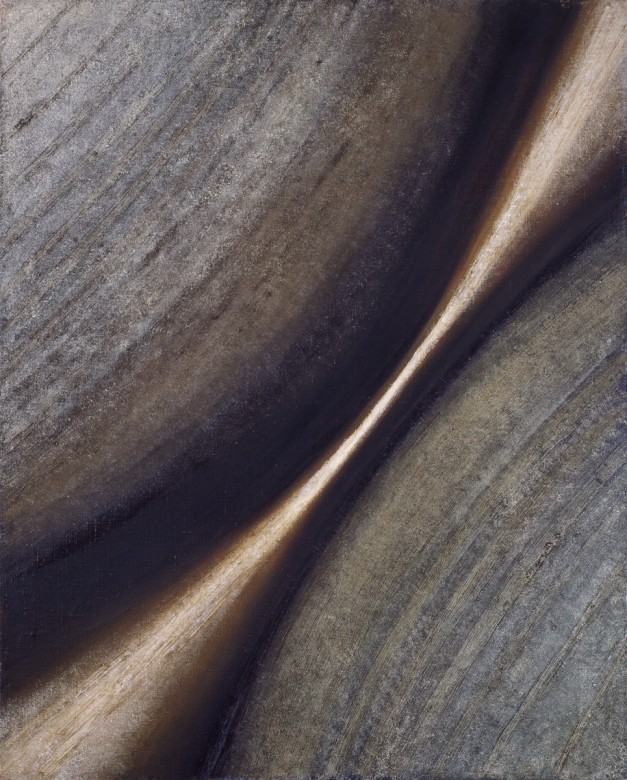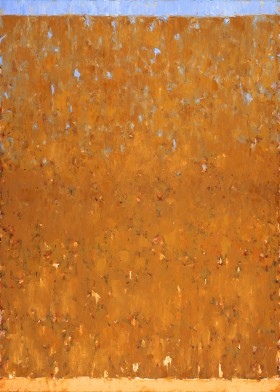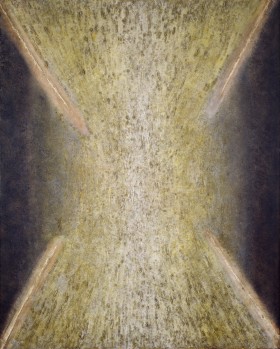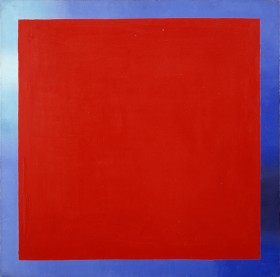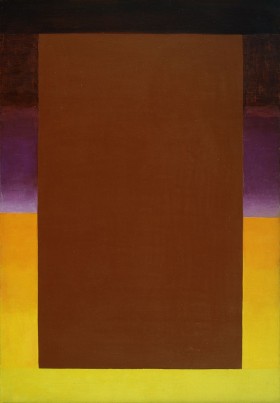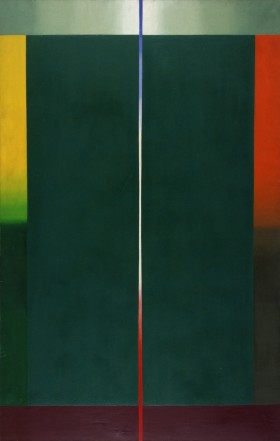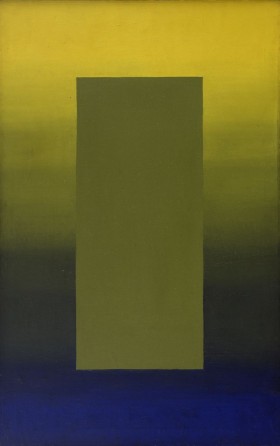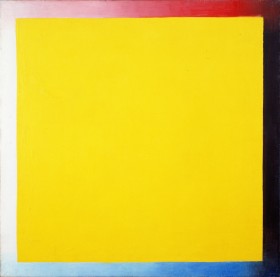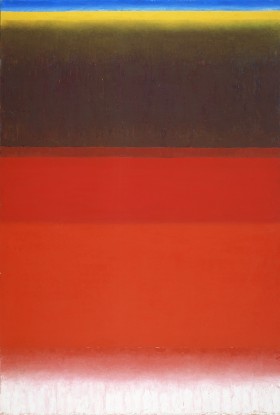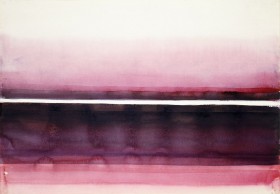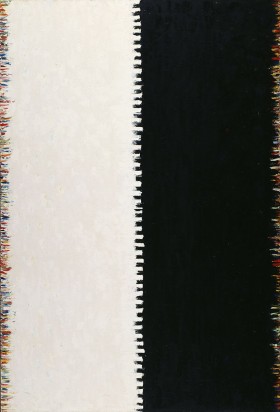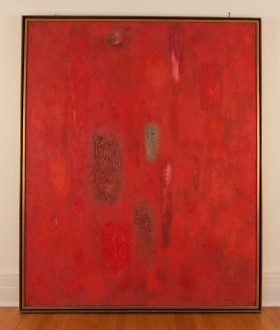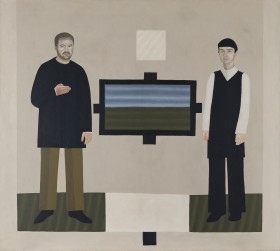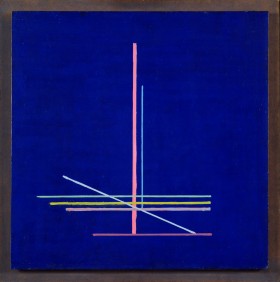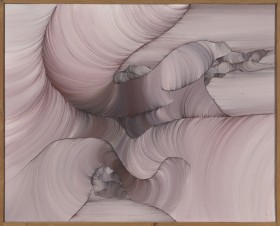Painting CXCIII
- type of object: painting
- date: 1965
- material/technique: oil on canvas
- dimensions: 100 x 80 cm
- inventory No.: M-108
- image licensed under: CC BY-NC-ND 3.0
Since 1955, Stefan Gierowski painted genre scenes he observed around him (The Dovecote, Scrap Iron Store). Houses, people, and animals in his paintings were represented by signs with simplified but still object-like shapes. The backgrounds included symmetrically arranged planes, which showed that the artist strove to achieve compositional discipline. In 1957, Gierowski removed references to the external world from his paintings, and created his own characteristic abstract style. At the same time, he stopped using literary titles for his canvases, replacing them with the word “painting” and the consecutive Roman numerals. He produced nearly monochromatic works, where the texture of the surface was handled in different ways; they focused on the ways in which colours contributed to building a mood. Between 1959 and 1960, Gierowski simplified his painting devices by reducing the effects of colour and texture. This was an intermediate stage that led to an exploration of the interface between optics and kinetics. Paintings created in the 1960s present dynamic spatial compositions of dark-coloured bands with varying tonal intensity. In Painting CXCIII, two rounded shapes that extend beyond the canvas are separated by a streak of light. Jerzy Stajuda, an artist and art critic, wrote: “This is about something more, it’s about the expansion of those paintings in all directions, spatial expansion, going beyond the frame. ... The contradiction between the apparent static structure and its dynamic potential for growth; that is, trivialising somewhat, between the »pictoriality« of the painting and its »architectural« implications – this is what characterises Gierowski’s latest work.”
Ewa Skolimowska
